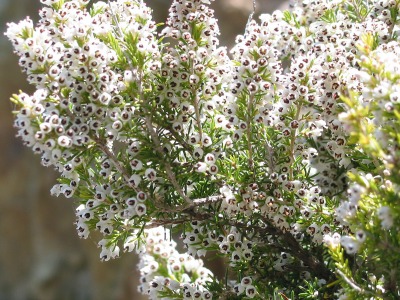What is briar wood for tobacco pipes?
Posted by Renia Carsillo on 21st Oct 2014
Have you ever wondered why tobacco pipes are made out of briar wood?
For those of us who know our pipe history, we know it wasn’t always that way. Tobacco pipes were made from stone, clay, other woods and meerschaum long before the first carver ever set knife to briar. But once he did, well, the pipe world would never be the same.
What is briar wood?

Briar wood originates from a shrub-like tree known as Erica Arborea and is actually part of the root structure. It isn’t technically a tree at all, but a large shrub. The plant is native to the Mediterranean Basin, Portugal, The Canary and Madeira Islands. What is lesser known, is that the shrub has migrated to Ethiopia and the Cameroon Mountains--although the quality of the briar produced there is often lower. Erica Arborea is recognizable for its tiny white flowers and larger-than-average height. The plant can reach up to 21 feet, although it grows more commonly between three and twelve feet high.
The part of the plant we know as briar wood grows just above Erica Arborea’s root structure. Known as “tree heath”, the dense roots are usually dug out of the ground by hand and then divided into small blocks known as burls. In the past this process required the destruction of the plant, but in recent years it has become possible to harvest the heath without destroying the shrub. Incredibly, it takes nearly 30 years for these root structures to grow large enough to be harvest. One plant’s root structure only creates between five and ten pounds of burl, or enough to create six to twelve pipes.
Once cut into blocks, the burls are submerged in boiling water to remove any sap and resin that might remain in the cut pieces. Finally, the blocks are stored in large kilns to dry for a year or more. All this happens before the humble block ever has the chance to become a smoking pipe!
Why briar wood for tobacco pipes?
Briar is highly sought after for many reasons.
First, the wood is naturally fire resistant. Briar can withstand temperatures exceeding 700 degrees Fahrenheit.
Second, briar wood is extremely dense, but is porous too. This unique combination allows the wood to absorb tar and moisture from pipe tobacco, resulting in a cool and dry smoking experience.
Determining high quality briar
The highest quality briar wood for tobacco pipes has a tight and uniform grain. In addition, the pattern will have a
combination of swirls and straight grains. This creates both a desirable esthetic and a desirable weight.
Collectors often have strong opinions on which grains are the best, however there are many different possible grains indicative of high-quality briar. The fibers of the wood grow from a central point outwards towards the bark, creating a plethora of intricate possibilities.
Some of the most popular grains become evident as the pipe is carved from the burl. These are the most

popular:
- Grains with flaring, known as flame grain;
- Grain with fairly parallel and even lines is fittingly called straight grain;
- Grain which is known as bird’s eye is a cluster of tiny dark marks and whorls that resemble the eyes of a bird.
Because it grows underground, briar wood can often have small air pockets, dirt and even stones lurking beneath the surface. This is why many inexpensive and machine-made pipes have fills in them, these small holes present after carving and must be dealt with. The absence of fills on a pipe usually indicates a higher quality briar.
Why briar usurped clay and meerschaum
Now that we know what briar wood is, we can easily see why it would usurp other materials for making tobacco pipes. Clay pipes may smoke clean, but they also smoke hot and are easy to break. Meerschaum pipes are beautiful and smoke cool, but are expensive and difficult to make. Briar presented the world with a way to make cool, clean and unique smoking pipes with much more ease than ever before.

